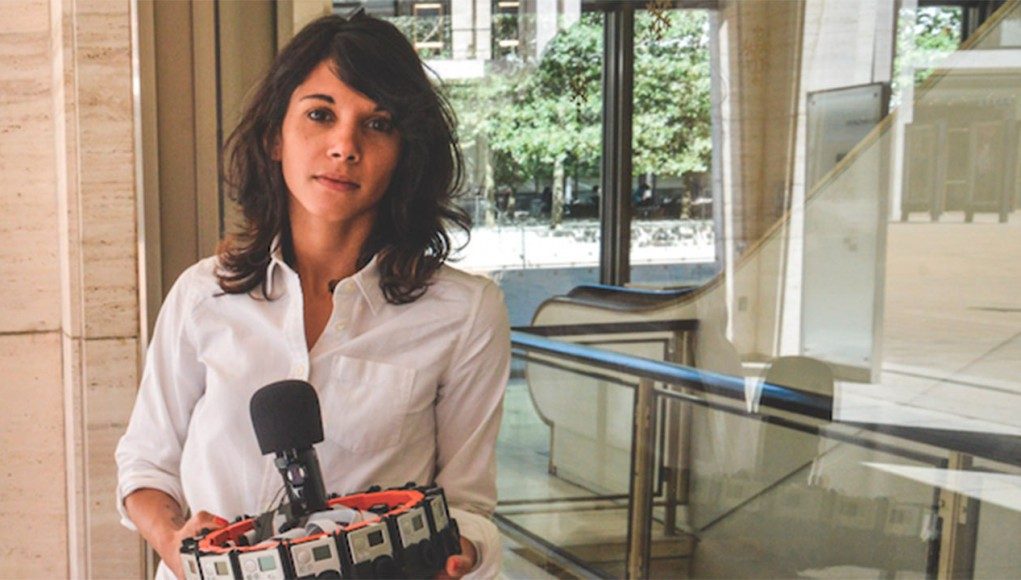 Jessica Brillhart is the principle VR filmmaker at Google working with the Cardboard team to field test the latest 360-degree Jump camera technology. She was working at Google’s Creative Lab as a filmmaker when she was invited to start doing test shoots in VR. She quickly saw the power of the VR medium, and has continued to do experiments to learn the language of VR storytelling. She’s been sharing her insights through a series of essays on Medium, and I had a chance to catch up with her at Sundance to talk more about the language of cinematic VR & her thoughts on storytelling in VR.
Jessica Brillhart is the principle VR filmmaker at Google working with the Cardboard team to field test the latest 360-degree Jump camera technology. She was working at Google’s Creative Lab as a filmmaker when she was invited to start doing test shoots in VR. She quickly saw the power of the VR medium, and has continued to do experiments to learn the language of VR storytelling. She’s been sharing her insights through a series of essays on Medium, and I had a chance to catch up with her at Sundance to talk more about the language of cinematic VR & her thoughts on storytelling in VR.
LISTEN TO THE VOICES OF VR PODCAST
The first VR film that Jessica produced was called World Tour, where she traveled the globe trying to show the extremes of earth conditions and trying to capture the essence of the following Kurt Vonnegut quote:
Hello babies. Welcome to Earth. It’s hot in the summer and cold in the winter. It’s round and wet and crowded. On the outside, babies, you’ve got a hundred years here. There’s only one rule that I know of, babies – “God damn it, you’ve got to be kind.”
Jessica has continued to experiment and film around the world in order to better understand and help inform others about the emergent medium of virtual reality. Some of her essays on Medium are about the rebellious nature of VR users, who try to push the medium to it’s limit to break the experience. And she’s been exploring the nature of editing in VR where it’s less about cutting from frame to frame, and more about nesting worlds within each other.
She started to explore the nature of relationships within VR with her second VR film called Resonance, where you follow the violinist Tim Fain around various different sonic environments. There’s a series of doors and portals, and it turns into a bit of a ‘Where’s Waldo’ type of experience in trying to locate where the sound is coming from. It encourages you to look around the space and really notice the differences in how sound reverberates depending on the location:
Jessica is continuing to explore and experiment in VR and asking questions about how narrative is going to work in VR. What the right pacing for editing? How will timing, motion, location, and voice overs work together within a 3D landscape within VR? How does presence fit into the equation of passive cinematic experiences? How can you use the drive towards discovery to choreograph and orchestrate compelling VR experiences? And how will artificial intelligence eventually be incorporated into more dynamic and interactive VR experiences?
To keep up with Jessica’s progress on her cinematic VR experiments, then be sure to follow here on Twitter as well as on Medium.
Become a Patron! Support The Voices of VR Podcast Patreon
Theme music: “Fatality” by Tigoolio








